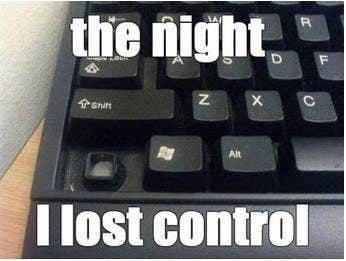MSM 667: Ouiji(PT)
Summary:
Shawn and Troy talk about ISTE plans, summer, mistakes, and more. Dave documents the logistics.
Jokes:
When God created ducks he thought, “I’ll waterproof that chicken and give it a kazoo.”
Guy just went by with a cart of horseshoes and rabbits’ feet.
- I think he’s pushing his luck.
There wasn’t one artist gun fight that didn’t end in a draw.
Not sure if I’ll lolly gag or dilly dally today
It’s challenging for bank managers at parties.
- They’re loaners.
Onya Marx must be SO sick of being asked if she’s ready.
I remember that time I woke up in a panic that I was late for work.
- Fortunately I was already at my job.
I finished the 14 Day Diet in two hours and 11 minutes.
Those who are organized are just too lazy to look for things.
No need to drive me crazy. I can walk from here.
Free Geese?
- Not sure what I’d do with one but I might go take a gander.
We all understand good, better and best.
- Why then do we contact the Better Business Bureau?
Middle School Science Minute
by Dave Bydlowski (k12science or davidbydlowski@mac.com)
K12Science Podcast: Logistics Engineer
I was recently reading the May – June 2025 issue of “The Science Teacher”, a publication of the National Science Teaching Association.
In this issue, I read the section, “Career of the Month” written by Luba Vangelova She wrote an article entitled, “‘Logistics Engineer Ron Charest.”
Logistics engineers typically work on supply chains, which encompass all of the steps required to get finished products to users, from procuring raw materials for factories, to warehousing and transporting goods. Ron Charest is a logistics engineer for the Coast Guard in Washington, DC.
http://k12science.net/logistics-engineer/
Reports from the Front Lines
- Ahh…Summer time
- ISTE
- Devices (MacBook, iPad, iPad, iPhone, Insta360)
- Sessions
The Social Web
Keep Indiana Learning @keepinlearning.bsky.social
Summer plans + license renewal? Get your PGPs done with ease! Our Digital Content Library lets you learn wherever you are this summer. Flexible & convenient & ready for you! keepindianalearning.org/digital-cont… #EduSky
Brian Klaas @brianklaas.bsky.social
After the latest round of grading papers, I wrote about AI, ChatGPT, the death of the student essay, and what it means for the future of human cognition. https://www.forkingpaths.co/p/the-death-of-the-student-essayand
MiddleWeb @middleweb.bsky.social
OUR 2025 SUMMER BOOK REVIEW FESTIVAL Doing some personal PD this summer? We’ve pulled together 23 of our reviews from the past year, highlighting books for teachers, school leaders & other educators working with grades 4-8. Check out these summaries! #edusky middleweb.substack.com/p/mw-substac…
Ron King @mthman.bsky.social
Wrapping up year 27 today! #edchat #mtbos #mschat #EduSky
Bernie Goldbach “topgold” @topgold.bsky.social
Reuters survey asked about AI platforms and chatbots. Publisher worry that these could further reduce traffic flows to websites and apps. But _all_ generations still prize trusted brands with a track record for accuracy. reutersinstitute.politics.ox.ac.uk/digital-news… h/t @marklittle.bsky.social
For the science nerds.
Thanks to everyone who voted for ‘went’ – an example of language swerving the expected. Instead of ‘go, goes, goed’ we have ‘go, goes, went’, because speakers decided to opt for the past tense of ‘wend’. This process is called ‘suppletion’.
Super excited for #ISTELive in a few weeks! Get details on all 16 of my presentations, booth sessions, and events here: https://controlaltachieve.com/2024/12/my-iste-2025-sessions.html
Strategies:
Don’t Erase That Mistake
https://www.ascd.org/blogs/dont-erase-that-mistake
Resources:
Cartoon Academy
Pittsburgh cartoonist Joe Wos takes students through the creative steps of drawing cartoon characters while sharing educational facts on the cartoon subjects. Viewers will also learn artistic terms during each lesson. The videos will be produced in chapter clusters of three, by topic, with episode one in the chapter being the most elementary, and the second and third being slightly more advanced. For ages 6-12.
https://mainepublic.pbslearningmedia.org/collection/cartoon-academy
Than Average
ThanAverage is a small unscientific investigation into how we value and compare ourselves to each other.
Connect Safely
ConnectSafely is a nonprofit based in Silicon Valley that educates people of all ages about online safety, privacy, security and digital wellness. Our resources include research-based safety tips, parents’ guidebooks, advice, news and commentary on all aspects of tech use and policy. We offer in-depth guides and “quick-guides” for parents, educators, youth and policymakers along with resources for seniors and other adults. We also produce the twice-weekly ConnectSafely Report for CBS News Radio along with webcasts, podcasts and special events.
Whether it’s social media, virtual reality or the emerging metaverse, connected technologies bring us enormous advantages, along with some challenges. ConnectSafely’s job is to help users get the most from their technology while managing the risks and help decision-makers craft sensible policies that encourage both innovation and responsible use. ConnectSafely has been a leading voice for rational, research-informed policies — not “moral panics” — when it comes to dealing with challenges brought about by emerging technologies.
We are the U.S. host of Safer Internet Day, a global celebration that takes place on the second Tuesday of each February, and founders of the One Good Thing campaign to surface and celebrate the many ways people of all ages and cultures use connected technology to make the world a better place.
ConnectSafely was founded in 2005 by technology journalist Larry Magid, also founder of SafeKids.com, and Anne Collier of NetFamilyNews.
AXIS The Culture Translator
“Fridge Sigs”
What it is: “Fridge cigs” are now some teens’ favorite way to take the edge off.
Why it’s not as scary as it sounds: A “fridge cig” doesn’t have any nicotine in it. In fact, it isn’t a cigarette at all—it’s a Diet Coke, chilled to perfection and sipped straight out of the can. Coca-Cola products, in general, have become extremely popular with young people, and now some TikTokers have been coming up with a bevy of tobacco-product inspired nicknames based on the type of cola being consumed. According to some, regular Coke in a glass bottle is a “cigar,” and a Coke Zero is akin to American Spirit cigarettes. As Eve Upton-Clark put it in Fast Company, “In a world full of prebiotic soda and protein water, sometimes all you really want is a crispy “fridge cigarette” to take the edge off.” As far as vices go, Diet Coke barely ranks—and it’s way better than mindlessly trawling on YouTube to de-stress.
Artificial Wisdom
What it is: Some ChatGPT users now believe they’re speaking with spirits.
Why it’s unsettling: A New York Times article shared the stories of people who became emotionally entangled with AI—convinced it was offering companionship, secret knowledge, and even spiritual insight. Part of the problem is how convincing talking to ChatGPT can feel. It doesn’t “know” anything but it can echo our thoughts, wounds, and desires with uncanny precision. A recent reflection on St. Augustine’s De Doctrina Christiana compares the experiences of these AI users to how demons deceive: not through producing misleading signs directly but through encouraging observers’ mistaken interpretation of what they see. AI works similarly: it mimics meaning, and we supply the rest. AI may be a tool we can use—but it is not a voice we can trust.
Web Spotlight:
The Death of the Student Essay—and the Future of Cognition
That’s why convincing students that intelligence is a skill they must cultivate through hard work—no shortcuts—has become one of the core functions of education.
https://www.forkingpaths.co/p/the-death-of-the-student-essayand
Random Thoughts . . .
Click the Play button below to listen to the show!
Podcast: Play in new window | Download

















You must be logged in to post a comment.